Pins, Panels & Possibilities: Highlights from WWDC25 Bengaluru.
- Om Chachad
- Jul 11
- 9 min read
Last year, I visited the Apple Developer Centre Bengaluru for Apple’s “Explore the biggest changes from WWDC24” event—an experience I would describe as nothing but transformational. Being my first ever developer conference, it opened up so many doors for me, allowed me to connect with so many talented developers, and made me feel seen. Fast forward to this week, I knew I had to return to Bengaluru for this year’s event—which I did, marking my first ever solo-trip! Not only did I attend this year’s event though, but I was also invited by Apple for the WWDC25 panel discussion (more on this later).
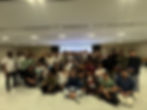
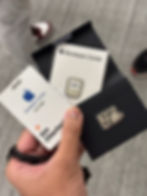
As always, the day started off by assembling at the Developer Center’s lobby and striking up conversations with fellow developers before we were escorted to the developer center floor. This year’s swag included the usual ID card with our names, a WWDC25 pin and a Classic Macintosh pin. (Clearly, Apple knows how to put a smile on a dev’s face.)
Getting the chance to connect with the incredibly talented developer community is the highlight of events like these. The first hour and half at the Developer Center was all about grabbing coffee & cookies and striking up conversations with new people to discuss everything from app ideas to sharing our enthusiasm for Liquid Glass and WWDC25 frameworks.
The next 3 hours were kicked off with a wonderful welcome by the Apple Team, before moving onto discussing everything from the new design language to Foundation Models. Let’s take a look at the highlights of this event and everything Apple wants developers to focus on this year to make our apps shine with the OS26 releases. As a heads up, I’ll be including links to WWDC talks that were either recommended by the Apple team at the event, as well as those that I have personally found rather relevant to the subject at hand.
Key Takeaways.
Design
Given the fact that WWDC25 unveiled Apple’s broadest design update in over a decade, it wasn’t a surprise that the first topic at hand was design.
Liquid Glass
Liquid Glass is a new material for Apple Platforms that’s built with the goal of shifting the focus to your content and preventing the on-screen controls from obstructing your primary interface.
Obviously, Apple wants to drive adoption for this new design to encourage consistency across first-party and third-party apps on their platforms. A recurring theme throughout the sessions was encouraging the use of native Apple UI Components provided by frameworks such as AppKit, UIKit, and SwiftUI. Apps which have been using native components adapt seamlessly to the new Liquid Glass UI simply by recompiling the app with little to no effort required on your part. Apple recommends recompiling your apps with the new SDK and seeing how much of the Liquid Glass UI they automatically inherit before further putting effort into manually adopting the material.
App Icons
App icons get a huge facelift this year, making them richer and more expressive. In Apple’s own words, they’re now designed to “complement rather than compete with the system UI”—a shared goal between icons and system controls. Icon Composer is a new app that’s now bundled with Xcode that allows you to create layered and glassy icons without much effort, which means that you now have to actively try hard to make an icon look bad. :P
Certain iOS app icons will automatically inherit the new glass effects without any recompiling or redesigning, although it’s still recommended that you use icon composer to carefully reconsider your icon for the new design. I’m still mad about the fact that we lose irregular app icons on Mac, but in the case your app has such an icon—then the system will wrap it inside a rounded rectangle before presenting it to the user.
Concentricity
We finally have an API for concentricity with containers!! (Technically, it’s not out yet; but it’s set to ship before the final OS 26 SDK) The new design is built with container concentricity in mind—resulting in a visually pleasing and consistent interface. I made this a separate pointer purely because of how exciting this is for me—no more guesstimating the right corner radius, “it just works” now.
Besides the fact that Liquid Glass is simply cool to look at, there are three key benefits of adopting the new design that Apple wants to highlight:
A content-first approach that puts the content at the user’s focus—not the controls.
Consistency across all platforms
Harmony with hardware through concentricity
Developing with the new Design
Adopting the design isn’t about simply applying the Liquid Glass effect everywhere throughout your interface, but rather about being intentional and slightly conservative when using the new material.
Structure
The new SDK comes built-in with provisions to bring your app’s core elements to life with beautiful animations and transitions. Sheets and menus now animate from their origin and the Tab bar now minimizes on scroll. The new Tab Bar Accessory View is also a great way to present useful information, and it adapts to the minimized tab bar upon scroll. Since the sidebar is now elevated on Mac and iPad, a new background extension API mirrors and extends media in the primary view so that it flows underneath the glassy sidebar; and ScrollViews also automatically extend under the sidebar.
Toolbars, Control and Search.
There’s now a variable blur edge effect that’s built into system toolbars—which means no more private APIs (woohoo)! It’s also important to keep in mind that toolbars must group relevant actions together and separate other buttons (such as those with text) to prevent clutter. Buttons inside toolbars can be tinted with color, but Apple wants you to use tinting only when necessary—not just because it “looks cool.”
The search bar now has a new home, one that’s more accessible albeit one that’ll take a while to get used to. On iOS, it’s now located at the bottom of the screen rather than at the top. On the other hand for Mac and iPad, it remains at the familiar top right toolbar.
Using Liquid Glass
The new material is readily available with the .glassEffect() modifier, but as I alluded to earlier—Apple doesn’t want you to use liquid glass everywhere. It’s important to understand the Human Interface Guidelines and watch the WWDC25 talks about Liquid Glass to understand the philosophy behind this interface before going in and blindly adopting it everywhere.
Apple Intelligence & ML
Platform Intelligence
Apps that have already adopted support for Image Playgrounds, Genmoji and Writing Tools will automatically benefit from the enhancements introduced in each of them. Here are the highlights of the changes:
Image Playgrounds has a better model now, as well as ChatGPT Support.
Writing tools now have follow up requests
You can now build Genmojis based on existing regular emojis! (Mixmoji, if you will hehe)
And Apple Intelligence comes to more languages.
Foundation Models
The star of the show this year for developers has to be the new Foundation Models Framework which is powered by the same model that powers the aforementioned Platform Intelligence features. It’s a 3B parameter model with a 4096 token context window—and since it runs on-device, there are virtually no rate limits, although you may run into some guardrails. Guided generation is available with the @Generable macro, and Tool Calling also allows the model to tap into the internet or access the user’s in app data for personal context. There are virtually endless possibilities for this framework and Apple wants you to explore them to elevate your app’s user experience.
Vision Framework
There are some neat updates to the Vision Framework. Document recognition is now more powerful, and you can now scan images and perform OCR while maintaining the original document’s formatting (including tables, and alignment) rather than simply extracting unformatted text. There’s also a new lens smudge detection API to handle cases where the photo doesn’t meet a high quality bar, or suggesting cleaning up the camera lens (like in the iOS 26 camera app).
App Intents
Arguably my favorite section at every WWDC is everything that App Intents unlock for developers and users this year. App Intents are now found in even more places throughout the system—from Visual Intelligence to the new spotlight. You can now have your app show up in Visual Intelligence search results by integrating App Intent support and App Intents can now be triggered via the new spotlight on Mac—making your app’s core features more accessible. Interacting Snippets also allow you to include a fully featured interactive UI inside App Intent results rather than simply presenting a view-only interface.
Custom ML Models
Custom ML models can be used via CoreML, either by training your own models or finding existing models online via Apple’s website or their page on Hugging Face. MLX is another great option when you want to explore powerful ML models for cases when something like the Foundation Models Framework simply isn’t capable enough.
Platforms, Frameworks, Tools
Xcode 26
Xcode is 24% smaller in download size, and workspaces now load upto 40% faster. There’s an improved code-search feature that helps you find the code you’re looking for faster, and Xcode Intelligence (not to be confused with Swift Assist) is also available now. By the way, Xcode 26 no longer includes Intel binaries by default.
Widgets
Widgets also get a huge update this year. Widgets are now available on CarPlay and visionOS, and live activities come to Mac. Control Centre controls provided by your app are now available on Mac, Apple Watch and the Action Button on Apple Watch Ultra.
iPadOS
iPadOS gets some huge multi-tasking improvements this year, and Apple wants your apps to be ready for it. Start by making sure your app adopts a scene based lifecycle that supports window resizing because the OS27 release will deprecate the Info.plist key for disabling window resizing, and any apps that don’t adopt the scene-based lifecycle will seize to work on the next release.
SwiftUI
SwiftUI’s updates this year as fewer than usual, but welcome nonetheless. Lists and Scrolling performance is vastly improved across all platforms, and a new instruments tool allows for in-depth testing. Rich text (AttributedString) comes to TextEditor and WebView is now natively available inside SwiftUI—which means lesser reliance on UIKit (yay!). SwiftCharts can now be presented in 3D, and all it takes is changing the initializer from Chart to Chart3D—yep, just two characters.
SF Symbols 7
There are new symbols and new drawing animations to along with them—inspired by calligraphy. Gradients can now be presented with the variable rendering mode and you can also use SF symbols to indicate download progress or indicate different states of a task.
App Store
We now have the Apple Games App—a.k.a. the comeback of Game Centre. App Store Connect gets some huge updates for Analytics with over 100 new metrics and a new user interface. TestFlight feedback is also finally coming to the App Store Connect app on iOS—thank you Apple! And last but not least, the product page gets updates such as Accessibility Nutrition Labels, Review Summaries, App Tags, and Declared Age Range—some of which are already available to use today.
Panel Discussion
As I briefly mentioned earlier, I was invited as a panelist on stage at the Developer Center to discuss how I’m taking advantage of the new WWDC25 Frameworks in my existing and upcoming apps and also to share my enthusiasm for the world of Siri Shortcuts. I was sharing the stage with Bhagat Singh from PhonePe, Saptarshi Prakash from Swiggy, and Rizwan Ahmed from Zoho. We had an incredible discussion about everything from the world of design, native vs cross-platform frameworks and WWDC experiences.

I’d like to thank the Apple Developer Center Bangalore Team, and especially Ashok Prabhu—Apple’s Technology Evangelist and panelist host—for inviting me on-stage and presenting me with this wonderful opportunity; I couldn’t have been more grateful.
Updates from Third-Party Developers
Apple invited developers from Zoho, Share.Market, and Swiggy to share how they are working on ideas to adapt OS26 frameworks for a better user experience.
Here is a non-exhaustive of the new frameworks and ideas that each of them are considering adopting for their next release.
Zoho: Foundation Models, Liquid Glass, Smart Transcripts, Vision Framework, Spatial 3D model generation, Live Captions, Spotlight App Intents Integration, iPad multi-tasking support.
Share.Market: Liquid Glass, Foundation Models
Swiggy: Liquid Glass, Foundation Models, Visual Intelligence, AlarmKit.
Apple Design Award Finalists

This year, there were three Apple Design Award Finalists from India—all of whom presented their apps at the conference this Friday. Developers from Evolve, Denim and Lumy took the stage to share the vision behind their apps as well as their journey from Day 0 to becoming ADA finalists. The insights from these talks were incredibly inspiring. The work that has gone into making these apps is truly commendable—making them not just apps, but full on experiences that you dive into right from when you install them. This was probably my favorite part of the session!
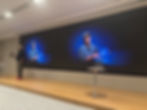
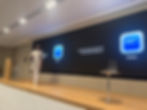
Random Thoughts
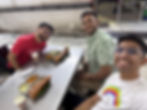
This trip to Bangalore marked my first ever solo trip and I thoroughly enjoyed my time there. Thanks to Rudrank Riyam and Swapnanil Dhol for making it extra-special and coming along with me to explore Bangalore—you made it 10x more fun. I attended Apple’s WWDC25 Recap as well as the Beyond WWDC25 session hosted by Swift Bengaluru at the Meesho office—both of which were super exciting experiences. As I’ve always liked to say, the best parts about events like these aren’t just the skills you acquire but instead the brilliant people you get a chance to interact with and the conversations you have; and this continues to hold true. I’ve returned home with even greater energy and inspiration to build amazing new experiences in the coming weeks, and I can’t wait to share what I build with you.
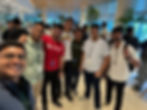
Once again, a huge thanks to the entire Apple Developer Center team for hosting the WWDC25 Recap, as well as for the Swift Bengaluru team for hosting the Beyond WWDC25 session—these events events made up for an absolutely enjoyable weekend. I’m looking forward to staying in touch with the folks I met, and connecting with even more people at future events like these. Until then, see ya!




